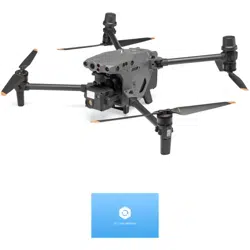Loading ...
Loading ...
Loading ...

16
©
2022 DJI All Rights Reserved.
MATRICE 30 SERIES User Manual
Obstacle Sensing
Obstacle sensing works best when the lighting is adequate and the obstacle is clearly textured. It does
not work well with obstacles that are less dense such as twigs on a tree. The aircraft must y at a speed
below 17 m/s with a maximum tilt angel of 25° to ensure a sucient braking distance. Aircraft cannot
sense obstacles that are out of the detection range.
50°
Infrared Sensing System
The infrared sensing system can only be used to sense large or highly reective obstacles and rough
surfaces. Aircraft cannot sense obstacles that are out of the detection range. The downward infrared
sensing system is used for positioning and assisting with altitude calculations during takeo and landing,
while the infrared sensing system on the other ve sides is for obstacle sensing.
Warnings
The measurement accuracy of the vision system is easily aected by the light intensity and the surface
texture of the object. The infrared sensing system can only be used to sense large or highly reective
obstacles and rough surfaces. The vision system may NOT function properly in the following situations:
a. Flying over monochrome surfaces (e.g., pure black, white, red, or green) or those without clear
texture.
b. Flying over surfaces with strong reected light or images.
c. Flying over water, ice, or transparent surfaces.
d. Flying over moving surfaces or objects (e.g., moving crowds, or swaying reeds, shrubs, or grass).
e. Flying in an area where lighting changes frequently or drastically or with direct exposure to strong
light.
f. Flying over extremely dark (< 15 lux) or extremely bright (> 10,000 lux) surfaces.
g. Flying at high speeds below 2 m above the ground (e.g., faster than 14 m/s at a 2m height or 5 m/s
at a 1m height).
h. Small obstacles (e.g., iron wires, cables, tree branches, or leaves).
i. The lens is dirty (e.g., from raindrops or ngerprints).
j. In low-visibility environments (e.g., heavy fog or snow).
Loading ...
Loading ...
Loading ...
